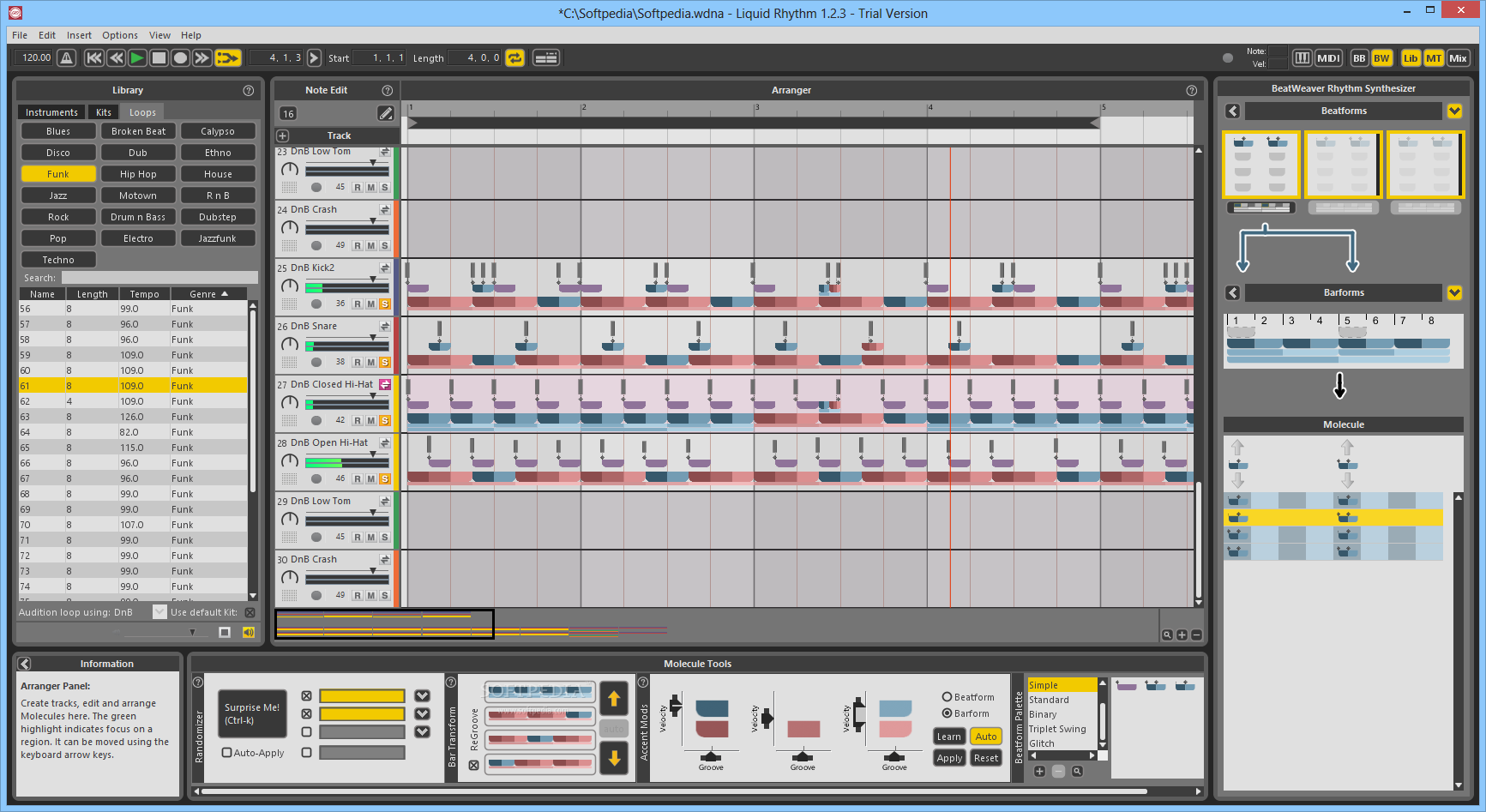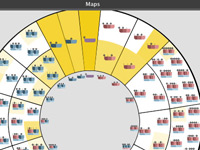| Developer(s) | WaveDNA |
|---|---|
| Stable release | |
| Written in | Java_(programming_language), Max_(software), C++ |
| Operating system | Microsoft Windows, macOS |
| Type | Music software |
| License | Proprietary |
| Website | www.wavedna.com |
Liquid Rhythm, the most powerful beat creation software known to man. Liquid Rhythm is a beat generator, sequencer, and software controller for MIDI-based music production that provides instant access to quadrillions of rhythmic patterns. Liquid Rhythm is a beat generator, sequencer, and software controller for MIDI-based music production that provides instant access to quadrillions of rhythmic patterns. Experiment with beats using a comprehensive suite of effects and see the relationship between notes with a.
- Liquid Rhythm Charters Liquid Rhythm Charters Liquid Rhythm Charters. Home; FAQ; Our Story; Contact Us; Grayton Beach Launch Fishing Charters Grayton Beach Launch.
- Liquid Rhythm offers a collection of rhythmic building blocks that allow you to create up to 10 quadrillion unique rhythm patterns. Craft complex, intricate beats and experiment with rhythmic hooks in seconds by dragging-and-dropping bar-long and beat-long patterns into the arranger.
- The Liquid Rhythm Kayaking Blog will be updated hopefully daily or as much as we can get KayakKev to write a quick days description of what we did and where we are. So check back regularly.
Liquid Rhythm is a beat sequencing and rhythm generation software developed by WaveDNA and initially released in 2010.[1] The software’s core technology, the Music Molecule, visualizes patterns and relationships between MIDI notes and allows users to create and edit note clusters and patterns rather than individual notes. Liquid Rhythm operates as a standalone program for macOS and Windows, and as a DAW plug-in in the Max for Live, VST, AU, and RTAS formats.[2]
The Music Molecule[edit]
Liquid Rhythm is based on WaveDNA’s patented Music Molecule technology, which visualizes notes and rests in BeatForms. BeatForms are one 8th note long with the number of note events indicated by the colour of the BeatForm: red BeatForms contain three note events, blue BeatForms contain two note events, and purple BeatForms contain one. BarForms are groups of BeatForms that are one bar in length.[3] By grouping these notes into modular containers, the Music Molecule provides structure to raw MIDI and captures the relationships between notes.[4] The Music Molecule engine is patented in both the USA and Canada.[1]

Features[edit]
Liquid Rhythm’s main ‘view’ is the Arranger window, where users can create and edit BarForms and BeatForms. Users begin by selecting an instrument and dragging it onto a slot in the Arranger. There are a wide selection of genre-based sounds, ranging from Acoustic to Techno, within the program.[2] Users can import custom sample libraries as well.[5] There are a number of features in the software for the formulation of entire BarForms as well as for editing minuscule details of the rhythms.
Liquid Rhythm populates the BarForm List with commonly occurring BarForms for the chosen instrument and includes a number of filters to refine the selection.[3] Below the BarForm List is the BeatForm Sequencer, a grid that allows users to insert different BeatForms into each of the eight sections in the selected BarForm.[2] The other BarForm creation tool is the BeatWeaver, wherein the user chooses a series of BeatForms and the BeatWeaver creates every possible combination that can be weaved into a BarForm.[2]


The Accent Modifiers set the MIDI velocity and timing based on the BeatForm accent color as well as give users the ability set a range to “humanize” velocity and timing.[6] The GrooveMover changes the arrangement of notes in the bar and the BeatForm Tumblers increases the complexity of a rhythm selection.[2] The Randomizer will populate a selected portion of the Arranger with a random rhythm created within user-set parameters.[2]
Development[edit]
Liquid Rhythm Review
In the 1980s, Vice President and Lead Inventor at WaveDNA, David Beckford worked with The University of Toronto’smusic cognition lab to study how musicians visualize and conceptualize music. This led to his extensive work in trying to unify MIDI and traditional music notations into a new and integrated language for musicians.[1] By 2009, David Beckford had developed a software prototype that allowed him to isolate and catalogue different rhythmic, melodic, and harmonic characteristics and manipulate them digitally. After partnering with Douglas Mummenhoff (CEO), the two founded WaveDNA.[1]
Liquid Music
See also[edit]
Liquid Rhythm New Orleans

Liquid Rhythm Crack
References[edit]
Liquid Rhythm Download
- ^ abcd'Company Overview'. WaveDNA. Retrieved October 28, 2014.CS1 maint: discouraged parameter (link)
- ^ abcdef'Review: WaveDNA Liquid Rhythm 1.4.2'. Electronic Musician Magazine. Retrieved March 18, 2015.CS1 maint: discouraged parameter (link)
- ^ ab'WaveDNA Liquid Rhythm'. Sound on Sound Magazine. Retrieved March 18, 2015.CS1 maint: discouraged parameter (link)
- ^'Rhythm, Recoded in Plug-ins, Ableton Live: A Conversation with WaveDNA'. CreateDigitalMusic Magazine. Retrieved March 18, 2015.CS1 maint: discouraged parameter (link)
- ^'WaveDNA Liquid Rhythm'. Attack Magazine. Retrieved March 18, 2015.CS1 maint: discouraged parameter (link)
- ^'WaveDNA - Liquid Rhythm'. Attack Magazine. Retrieved March 18, 2015.CS1 maint: discouraged parameter (link)
Liquid Rhythm Vst

